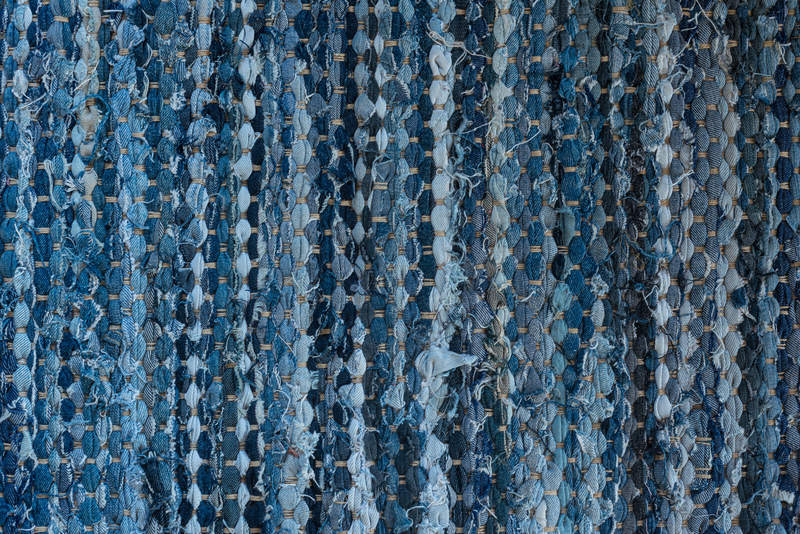Innovative Recycling Solutions for Your Clothes
Fast fashion and the growing demand for new apparel have led to increasing textile waste--a massive global challenge. More than 92 million tons of textile waste ends up in landfills each year, according to various environmental studies. However, thanks to cutting-edge technology and a shift toward sustainable fashion, innovative recycling solutions for your clothes are emerging at an unprecedented pace. These solutions not only give your old garments new life but also contribute to a circular economy and reduce your environmental impact.
Understanding the Clothing Waste Crisis
The clothing industry is notorious for generating pollution through production, consumption, and disposal. For decades, most unwanted clothes ended up in landfill sites or incinerators. Here are some key facts highlighting the need for new solutions:
- 85% of textiles in the US alone go to landfill each year (EPA).
- It can take over 200 years for textiles to decompose in landfills.
- Textile production is responsible for 10% of global carbon emissions.
- Traditional donation and thrift stores only manage to resell a fraction of donated clothes.

Why Recycle Your Clothes?
Adopting effective recycling solutions for clothing directly benefits the planet and society. Some advantages include:
- Reducing landfill waste and resource extraction.
- Lowering greenhouse gas emissions from clothing production and transportation.
- Supporting local economies and job creation within the recycling sector.
- Promoting sustainable fashion practices.
Top Innovative Clothing Recycling Solutions
Today, innovative technologies and creative business models are revolutionizing how we repurpose clothing. Below, we delve into the most remarkable modern clothing recycling techniques and their impact.
1. Fiber-to-Fiber Recycling Technologies
Fiber-to-fiber recycling is a process where old clothes are broken down and converted back into raw textile fibers, which are then used to create new garments. Unlike downcycling (where clothes become rags or insulation), this method maintains the full value of the materials.
- Chemical Recycling: Advanced chemical treatments can dissolve cotton, polyester, and blended fabrics into reusable fibers. Companies like Renewcell use hydrolysis to turn discarded cotton into new, high-quality cellulose pulp for textile production.
- Mechanical Recycling: Involves shredding old garments and re-spinning the fibers. While the process is more common for wool and cotton, new machinery is pushing the limits for blended fabrics.
These innovations drastically reduce the environmental impact of fashion by closing the loop on textile resources.
2. Clothing Take-Back Programs by Retailers
Major fashion retailers are joining the green movement by establishing take-back schemes that collect used garments in-store:
- H&M's Garment Collection Program: Accepts any brand or textile condition for recycling or reuse.
- Zara's Clothing Collection: Places recycling bins in stores where shoppers can drop off unwanted clothes.
- Nike's Reuse-A-Shoe: Turns worn-out sneakers into material for sports surfaces.
These initiatives not only promote recycling but also educate consumers about the importance of responsible fashion disposal.
3. Upcycling and Creative Repurposing
Instead of breaking down textiles into raw materials, upcycling transforms old clothes into new products of higher value:
- Fashion Designers & Artisans: Many startups and eco-brands create unique clothing lines from pre-loved apparel, deadstock, or fabric scraps.
- DIY Projects: Consumers repurpose t-shirts into tote bags, patchwork quilts, or stylish accessories at home.
- Collaborative Platforms: Online marketplaces (such as Etsy) allow upcyclers to sell reinvented clothing items to a wider audience.
Upcycling not only reduces waste but also celebrates creativity and personal expression.
4. Clothing-to-Energy Conversion
In cases where recycling or upcycling is not viable, innovative technologies are emerging to extract energy from textile waste through safe and efficient processes:
- Bioenergy Plants: Specialized facilities use anaerobic digestion or pyrolysis to turn non-recyclable textiles into biofuels or electricity.
- Waste-to-Energy Incineration: Advanced incinerators capture energy and minimize emissions, offering a last-resort solution for worn-out clothing.
While energy recovery should never replace recycling, it provides a preferable alternative to landfilling.
5. Textile Composting and Biodegradable Fabrics
Certain natural fibers like organic cotton, linen, and hemp can be composted at home or in industrial facilities:
- Special Compost Bins: Designed to process 100% natural fabrics, these systems break down textiles into nutrient-rich soil additives.
- Biodegradable Innovations: Emerging brands are developing biodegradable synthetics and plant-based dyes to ensure a truly circular fashion cycle.
Composting is a regenerative approach to dealing with worn-out clothing and reducing environmental impacts further.
How to Recycle Your Old Clothes: A Step-by-Step Guide
1. Sort Your Clothing
Divide clothes into these categories:
- Good Condition: For donation or resale.
- Worn or Damaged: For textile recycling or upcycling.
- Unusable: For composting or energy recovery (for plant-based fabrics).
2. Identify Local Solutions
Check for options like:
- Municipal Textile Recycling: Many cities offer drop-off points or curbside pickup for clothing waste.
- Retailer Take-Backs: Use in-store bins from major brands.
- Community Drives: Participate in local clothing swaps or charity collections.
3. Explore Innovative Options Online
Leverage technology to find the perfect solution:
- Apps and Directories: Tools like Ecosia or Earth911 help locate textile recycling points.
- Mail-In Recycling Programs: Companies such as Terracycle and For Days accept clothing by mail for recycling or upcycling.
4. Upcycle or DIY
Get creative at home with simple upcycling projects, or find inspiration on social media platforms like Pinterest.
5. Educate and Inspire Others
Share your success on social channels, encouraging sustainable habits within your community.
The Role of Technology in Clothing Recycling Innovation
Technological advancements are critical in advancing innovative recycling solutions for your clothes:
- AI-powered Sorting Systems: Automated systems can identify textiles by fiber type and condition, improving recycling efficiency.
- Blockchain Traceability: Ensures supply chain transparency and authenticates recycled content in new garments.
- Eco-Friendly Dye Removal: New processes remove dyes without harsh chemicals, enabling cleaner fiber recycling.
- RFID & Smart Tags: Embed recyclability information for better clothing identification and tracking.
The digital transformation of the fashion industry is paving the way for smarter, more effective recycling systems.
The Economic and Social Impact of Clothing Recycling
The benefits of innovative clothing recycling go far beyond environmental gains:
- Job Creation: Recycling, sorting, and remanufacturing support growth in the green jobs sector.
- Social Enterprises: Many textile recycling initiatives empower marginalized groups through training or employment.
- Consumer Empowerment: Sustainable choices foster a more responsible and conscious society.
Investing in circular fashion systems creates lasting value for both individuals and communities.
What You Can Do: Adopting Sustainable Clothing Habits
Recycling is just one piece of the sustainability puzzle. Consider these holistic approaches for reducing your apparel footprint:
- Buy Less, Choose Quality: Invest in durable, timeless pieces that you'll wear longer.
- Care for Your Clothes: Wash at lower temperatures, repair damage, and rotate items to extend their life.
- Support Eco Brands: Look for certifications and companies prioritizing circular fashion and ethical production.
- Participate in Clothing Swaps: Exchange clothes with friends or through organized events to refresh your wardrobe sustainably.
- Get Informed: Stay up-to-date with the latest developments in textile recycling and support legislations promoting producer responsibility.

Future Trends in Clothing Recycling
The next decade will see even greater strides toward innovative textile recycling solutions. Look for:
- Recycled Fiber Innovations: Breakthroughs in recycling blended and technical fabrics.
- On-Demand Manufacturing: Reduce waste by making garments to order using recycled materials.
- Global Partnerships: International collaboration for developing scalable clothing recycling infrastructure.
- Zero-Waste Communities: Urban areas striving for closed-loop textile systems and full material recovery.
Conclusion: Shaping a Greener Fashion Future
Embracing innovative recycling solutions for your clothes is an essential step toward a sustainable and resource-efficient future. Whether you recycle, upcycle, compost, or support eco-friendly brands, every action counts in closing the textile loop and conserving our planet for generations to come.
Start today by exploring your local and digital recycling options--your wardrobe (and the Earth) will thank you!



